Demystifying the Pistol-Stabilizing Brace
By Allen Forkner, GunBroker Publisher
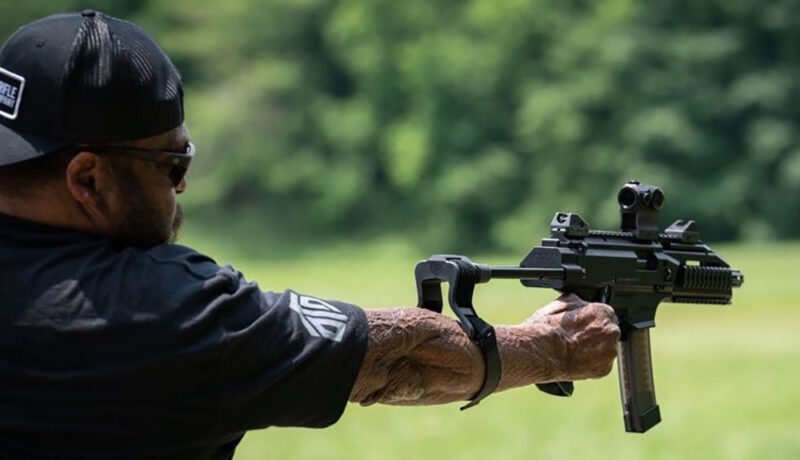
In 2013, a veteran took a fellow serviceman to the range to help the injured return to a pastime he greatly loved. However, the trip quickly soured when the range officer felt the wounded veteran, who suffered wounds to his arms overseas, did not have the ability to safely handle an AR-style pistol and asked them stop shooting.
The veteran, Alex Bosco, decided that something needed to be done to help wounded or those with physical issues safely and accurately return to the range, as well as hunt and defend themselves. Thus, was born the pistol-stabilizing brace.
After many rejections elsewhere, Bosco walked into the SIG Sauer booth at SHOT Show and showed them his designs. SIG immediately saw the value of the pistol-stabilizing brace and entered into a partnership.
Since then, Alex and his company, SB Tactical, have created braces for dozens of pistol-configuration platforms and helped those with physical issues get back on the range. At the same time, other manufacturers began to develop their own takes on the brace leading to an explosion in large frame, rifle-caliber pistols on the market.
The Controversy
At first glance, many familiar with the National Firearms Act, which regulates short-barrel rifles, wondered how pistol-stabilizing braces passed the ATF’s technical branch. It was the initial opinion of the ATF, that the brace was designed to be used as an arm attachment, and not a butt stock, making them completely legal.
Gun owners, however, began to bombard the ATF with questions about the brace, and in 2023 after years of public comments, a new rule was published declaring the braces were essentially a stock and therefore their use would turn any firearm into an SBR and required a tax stamp.
A Win in the Courts
Immediately after the announcement of this rule, several 2nd Amendment advocacy groups filed lawsuits around the nation, with the Second Amendment Foundation and Firearms Policy Center leading the way. Initially, the FPC won an injunction protecting its members, but as precedent was set, the dominoes began to fall.
On June 13, 2024, a federal district court threw out the regulation, citing a massive divergence from the initial proposed rule to the final, published rule as cause for vacating. In addition, the court ruled that the ATF could not demonstrate a justified rationale for reversing its initial decision that pistol-stabilizing braces were legal to own and use.
What that means, in normal speak, is that braces are once again legal for citizens to own, attach and use. As with all legal matters, you are heavily advised to check your state and local regulations.
What is a Pistol-Stabilizing Brace, Exactly
Now that we have the 800-pound gorilla covered, let’s look at the general design of these braces and how they’re to be used.
Braces work by creating a third point of contact to the body (or second point, for those with physical issues), which helps increase stability and accuracy. This is especially critical on longer, heavier firearms like rifle-caliber pistols.
While designs vary, they typically wrap around or strap to the forearm on the dominant (trigger) arm and serve to hold the firearm in place. Usually, these devices are made of a soft, pliable material, to contour to the shape of the arm comfortably.
On AR-style pistols, braces attach by sliding over the buffer tube. Non-AR pistols often have rails or other attachment points. They are generally easy to install and have a noticeable impact on performance, especially one handed.
Pistol-Stabilizing Braces
SB Tactical SBA3
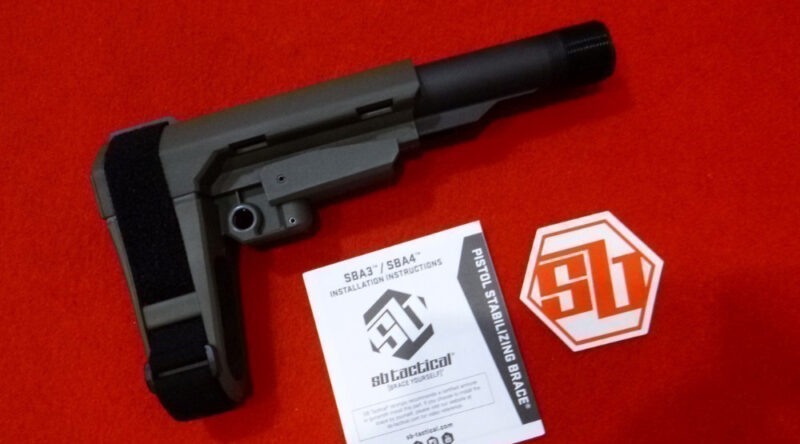
Might as well start with the original, and there’s no more common pistol-stabilizing brace than the SB Tactical SBA3 brace for AR-style pistols. This is a basic, fixed position brace that has a split band that is wrapped around the forearm, then secured with a Velcro strap. Nothing fancy, just works.
SB Tactical SBM47

Don’t feel like you must have an AR-pattern pistol to enjoy a brace. SB Tactical also offers the SBM47, designed for AK-pattern pistols. Similar to the SBA3 in usage, the SBM47 looks like it was part of the original design, so you don’t have to lose the aesthetic for the performance.
KAK Shockwave
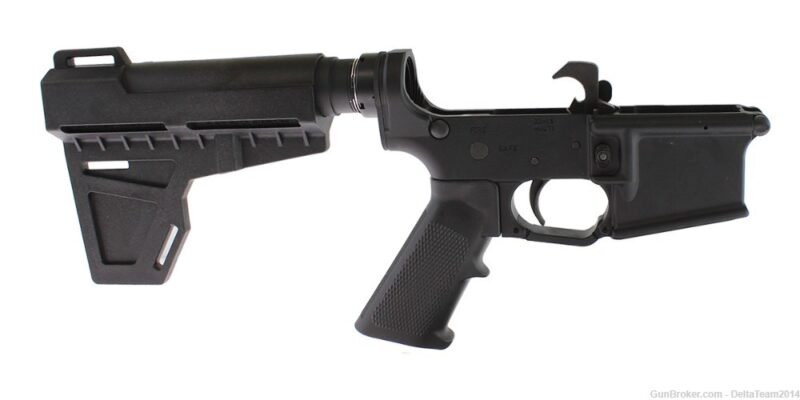
KAK takes a slightly different approach to the brace with its Shockwave. Instead of a rubbery clamp that goes around the forearm, the Shockwave is a thin blade of polymer that wedges up against the forearm and has slots for hook and loop straps if you choose. These are the lightest braces on the market and have a very minimalist appeal.
CAA MCK Micro GLOCK Conversion Kit

For those looking for something in a pistol caliber brace, CAA offers the MCK Micro GLOCK kit for GLOCK brand pistols. This replaces the slide assembly on your stock GLOCK, providing a clamping brace that goes around the forearm. This helps disabled shooters handle the recoil of the lightweight polymer pistols and brings a bit more barrel length to the party for those shooting 10mm or 357 SIG models.
SB Tactical SBPDW
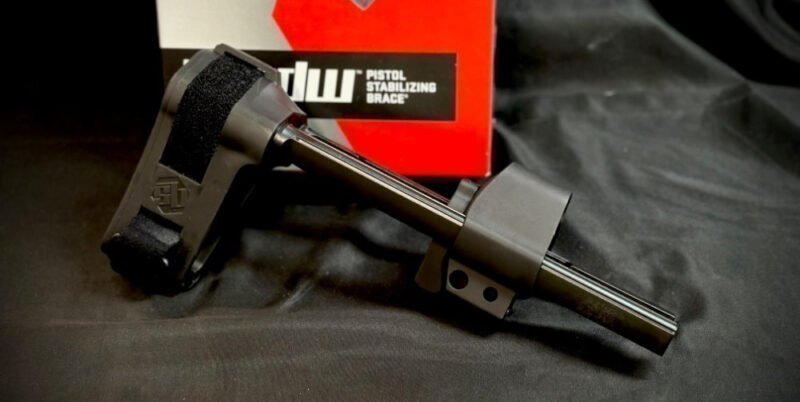
Finally, the coolest brace of the bunch. SB Tactical’s SBPDW is a length-adjustable brace made for pistol-caliber carbines and PDW-style pistols. This has all the looks of a proper PDW, but all the function of a pistol brace. These are great choices for the SIG MPX, CZ Scorpion or any rifle-caliber pistol.
Regardless of the model, the benefits of the pistol-stabilizing brace speak for themselves. With their legality once again confirmed by the federal court, these tools are helping thousands of people with physical limitations return to, or get into, the shooting sports. And that’s a great thing for all of us.
Related Article: Types of Pistols: Know Before You Buy
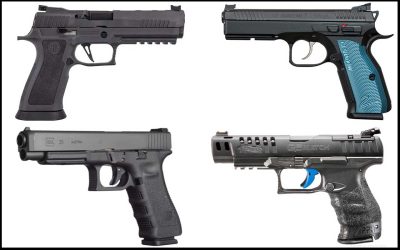
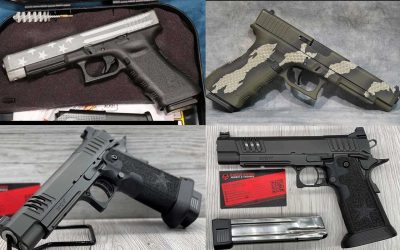
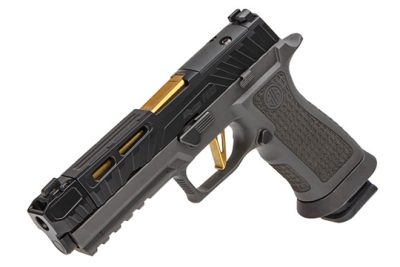
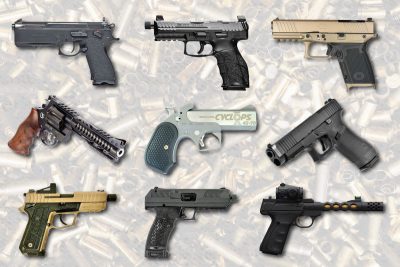


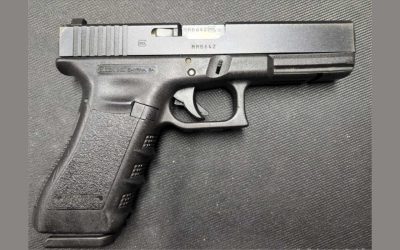
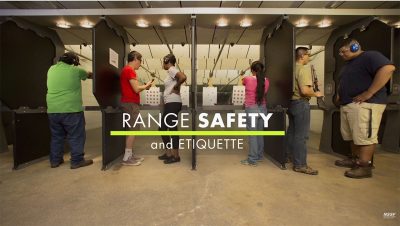
![Features of the Glock G47 MOS Handgun [Video]](https://content.gunbroker.com/wp-content/uploads/2023/02/GLOCK_G47-10-1200-x-800_hero-400x267.jpg)
![Features of the Glock G43X MOS Subcompact 9mm [Video]](https://content.gunbroker.com/wp-content/uploads/2023/06/GLOCK-43X_DSC0432-400x267.jpg)
![Features of Glock 19 Gen5 MOS: G19 Special Package with the Holosun SCS [Video]](https://content.gunbroker.com/wp-content/uploads/2024/02/Glock-G19-Range-Day-Gunbroker-7-400x267.jpg)
